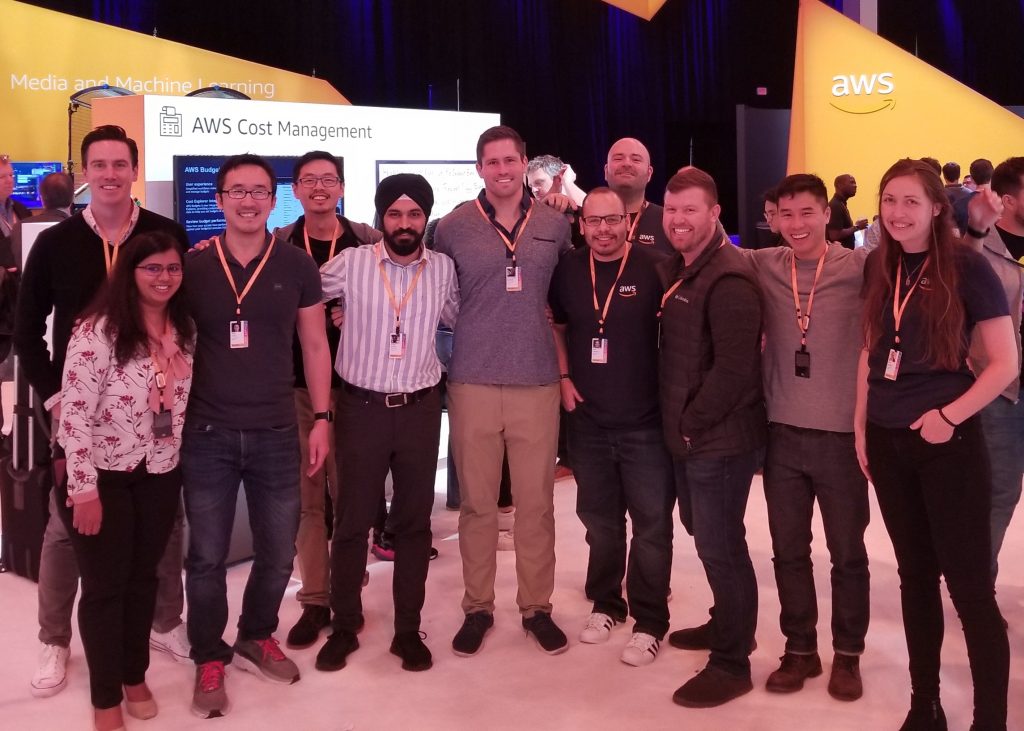AWS Cloud Financial Management
Cost Management at re:Invent: Key Takeaways
And just like that, the Expo Hall portion of the re:Invent conference is officially closed for 2019! The AWS Cost Management booth staff would like to thank the hundreds of you who took the time to stop by and share anecdotes about your cloud financial management journey with us. We also appreciate your feedback on opportunities for improving our product capabilities in the future.

Back to business: this post will share some of the key takeaways and best practices we learned from many of you over the past few days.
Savings Plans are a Gamechanger
Many of you mentioned that you have already started purchasing Savings Plans. The best practice that we heard from many of you is to start out by purchasing EC2 Instance Family Savings Plans for the instance families that support your key workloads. From there, wait a week or so to see how your usage patterns are trending before diving into purchasing additional EC2 Instance Family Savings Plans or the more broadly-applicable Compute Savings Plans. Don’t forget to shrink the lookback period on the Savings Plans recommendations page if you have recently made significant purchases or changes in your usage.
Leveraging Cost Categories and Tagging Best Practices
In the cost allocation space, there were a couple of exciting announcements this week: Tag Policies and Cost Categories (Public Beta). After talking the features over with many of you, we recommend using the new tag policies to review and classify your resources. From there, enable the appropriate tags for cost allocation purposes from the dedicated page in the Billing Console. Once those tags are enabled, you can create custom business groupings (e.g., costs centers or departments) using tags or linked accounts.
Accessing Multiple Levels of Data Grouping in AWS Cost Explorer
While you can only group by a single dimension in the Cost Explorer web application, you actually group by two dimensions when you use the Cost Explorer API. Some of you mentioned that your ideal use case would be to view your costs organized by service and further broken down by usage type, but there are a lot of possibilities here. I would highly recommend looking into using the Cost Explorer API if this sounds interesting to you. You can learn more here.
Please note that the Cost Explorer API has a cost of $.01 per paginated request.
Getting to Know the AWS Compute Optimizer
One of the hot topics of discussion was the brand new AWS Compute Optimizer, which uses machine learning techniques to optimize your compute resources for your workloads. These capabilities extend the Rightsizing Recommendations functionality currently available in Cost Explorer, which help you identify idle instances and to downsize under-utilized instances within the same instance family.
It is also worth mentioning that all of these product capabilities are free! Looking forward to hearing how more about your instance right-sizing strategies.
Conclusion
I hope that you have all enjoyed this jam-packed week as much as I have! It has been an absolute pleasure getting to know many of you and I am looking forward to seeing what each of you build using the brand-new services and features.
And last, but not least, I would like to extend a special thank you to Levon Stepanian, Alee Whitman, and the rest of the amazing AWS Cost Management booth team for their tireless support and enthusiasm! Our Product Feature Request cup (mason jar) runneth over. Until next time!
